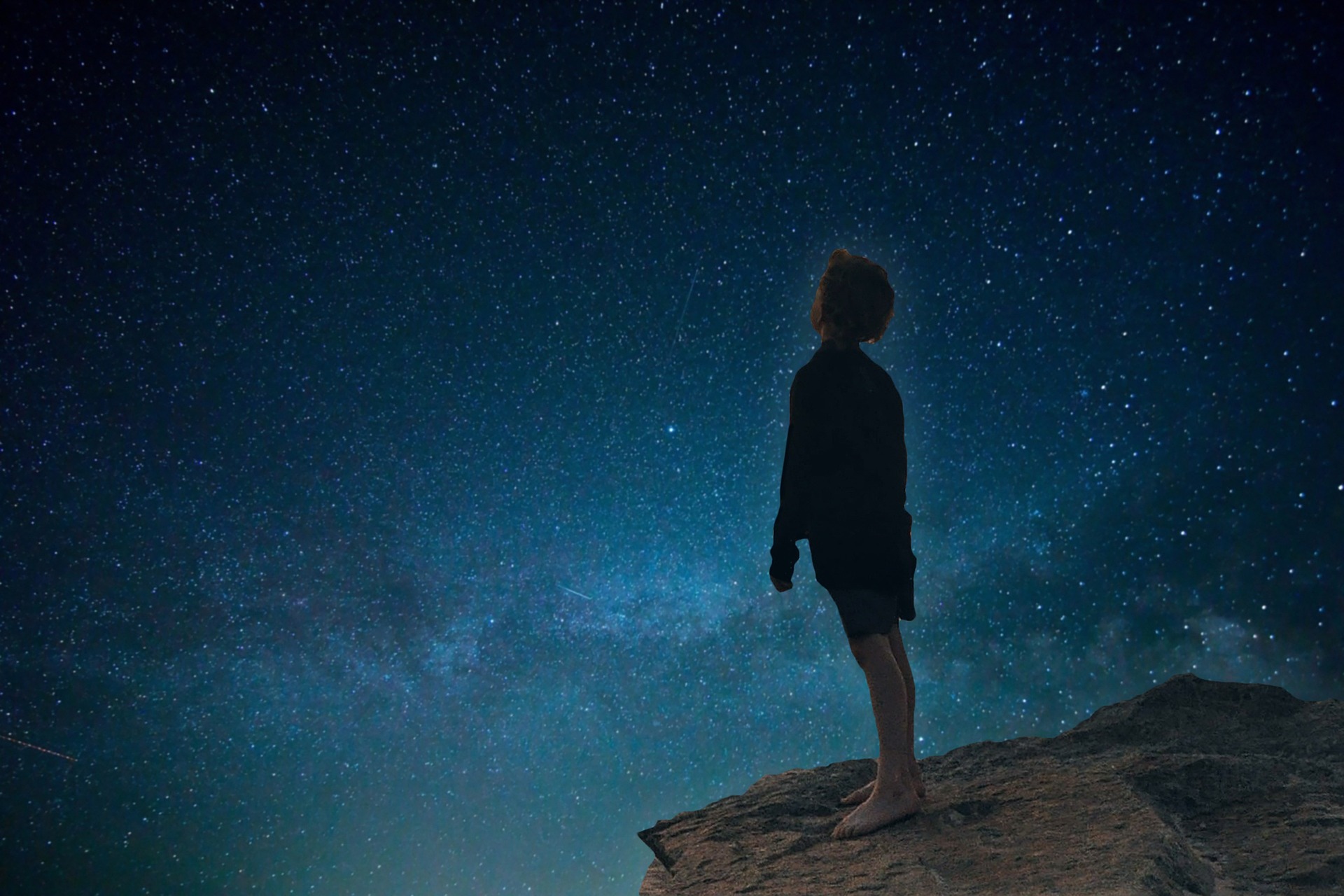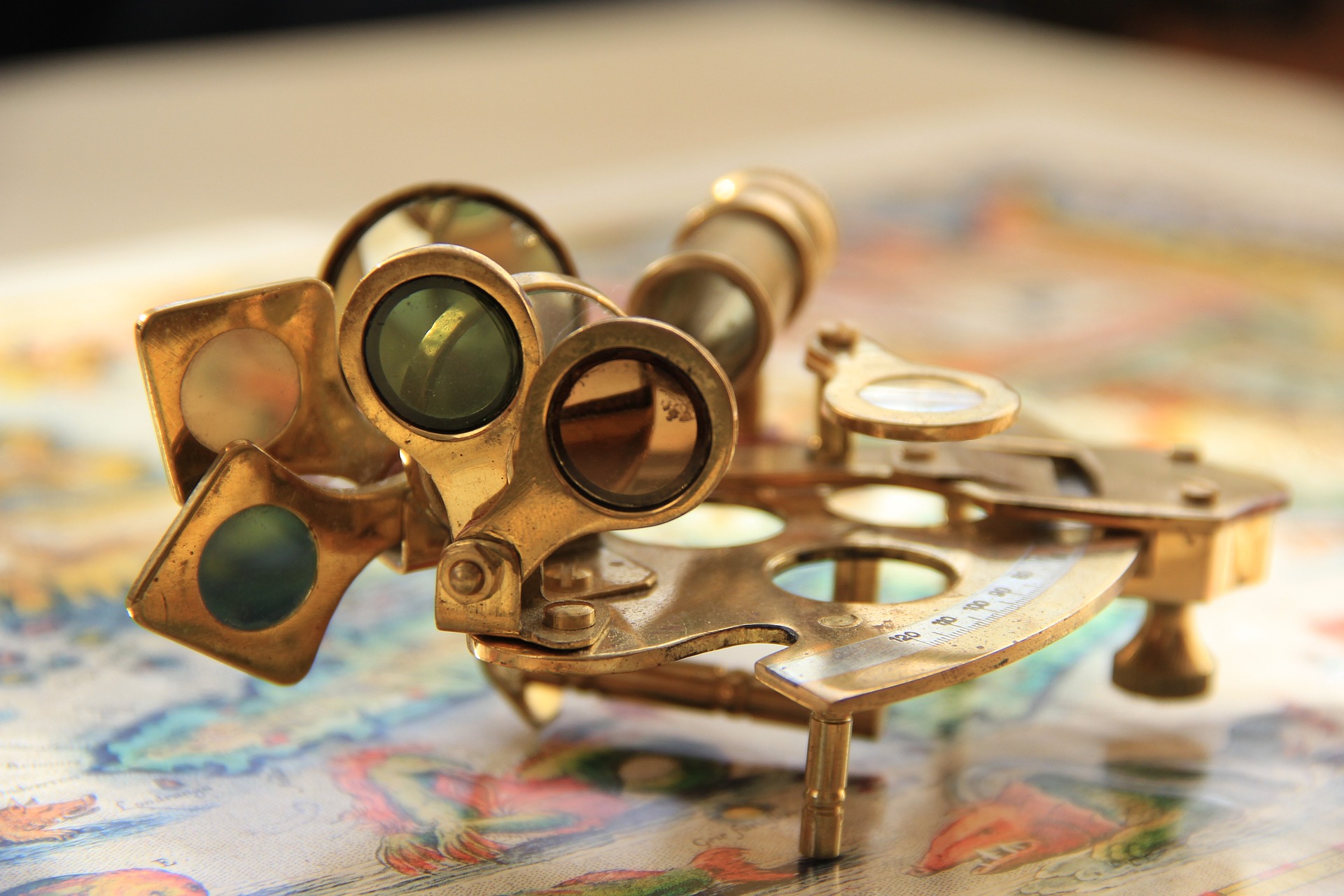Bright Side of the Night – 2.4.2
Perception of the Nocturnal Landscape and the Starry Night Sky
The Health Value of Real Darkness
In today’s world, everything is bright. Real darkness becomes a positive contrast; it has value. The natural night landscape is an increasingly rare experience. It is mysterious, archaic and romantic; its character is unique and also a source of identity. Darkness heightens our senses. Our imagination takes the place of that which has become invisible.
Contemplating the Starry Sky
Many of us are unfamiliar with the natural night. Its experiential value is derived from the view of the starry sky and the edges of landscapes barely discernible in dark shadows. When we look at the night sky, we contemplate the infinity of space, the meaning, and the end of our existence. Looking into the Milky Way, our own galaxy or even into foreign galaxies, illustrates the infinity of the universe and shows the finiteness of the areas and resources on our Earth.
Starry Sky Observations
Observing the starry sky is one of the oldest cultural habits and traits of mankind. While initially the question of determining time and the creation of calendars were in the foreground, the observation of the starry sky later played a prominent role for astronomical navigation in seafaring. The position of certain stars was determined with the help of a sextant. In combination with precise clocks, the position of the ship and the course could thus be determined exactly.
The Power of Old Wisdom
Our ancestors also used the starry sky to exercise their creativity and imagination. Many myths have grown up around constellations. Centuries of observing the phases of the moon, the signs of the zodiac, the sun, and the planets have provided practical knowledge for planting and harvesting in agriculture and other areas of daily life. For example, many ancient cultures used the Pleiades star cluster to determine the time of sowing. According to this method, sowing occurred in March when the Pleiades disappeared from the firmament, and harvesting occurred in October when the Pleiades reappeared.
Sowing and the Moon
It is a common practice among numerous cultures to cultivate fields and gardens according to the moon cycle. Sowing before the full moon, for instance, is said to result in higher yields and better quality crops, apparently due to the shorter distance between the moon and the Earth, which recurs once every month. Scientists describe the effect of the forces as rather small, pointing to the much greater effects of water and nutrient availability, light and heat.
Woodworking and the Moon
Another popular activity related to the moon cycle is woodworking. It is said that the wood from trees that are felled in the wintertime, when the moon is waning, just before the new moon or at the beginning of March, exhibits higher density and longer durability. However, the correlation between felling instances and wood quality is yet to be scientifically proven.
Further Resources
Links below will redirect you to external websites. In accordance with the European data protection declarations, we would like to point out that by clicking on these links you may send data to external providers. We cannot prevent that.
Images
![]() Numerous images of the night sky can be downloaded on Pixabay.
Numerous images of the night sky can be downloaded on Pixabay.
Videos
![]() Island in the Sky – La Palma Starry Nights (Christoph Malin)
Island in the Sky – La Palma Starry Nights (Christoph Malin)
![]() Plains Milky Way (Dakotalapse) (Cell Press)
Plains Milky Way (Dakotalapse) (Cell Press)
 L’influenza della luna sulle semine, cosa c’è di vero? – Natura e Bellezza
L’influenza della luna sulle semine, cosa c’è di vero? – Natura e Bellezza
Online Resources
![]()
 The influence of light pollution on human (Helle Not)
The influence of light pollution on human (Helle Not)
![]()
 Verlust der Nacht / Loss of the Night: Interdisciplinary Research network
Verlust der Nacht / Loss of the Night: Interdisciplinary Research network
![]() Online-Publication “Into the Night in the Kaunertal Valley”
Online-Publication “Into the Night in the Kaunertal Valley”
 Online-Publikation “Unterwegs in die Nacht im Kaunertal”
Online-Publikation “Unterwegs in die Nacht im Kaunertal”
 Online-Publikation “Konzept zur nachtbezogenen Naturpädagogik“
Online-Publikation “Konzept zur nachtbezogenen Naturpädagogik“
 Il valore del buio della notte – CISA
Il valore del buio della notte – CISA
 I sorprendenti motivi per cui dovresti provare a guardare le stelle – Rituals
I sorprendenti motivi per cui dovresti provare a guardare le stelle – Rituals
 La luna ed il suo influsso in agricoltura
La luna ed il suo influsso in agricoltura
 “Legno lunare” – Il legno al momento giusto – Thoma
“Legno lunare” – Il legno al momento giusto – Thoma
Further Readings
![]()
 Regularly updated Literature and links with regards to light pollution and dark skies (Helle Not)
Regularly updated Literature and links with regards to light pollution and dark skies (Helle Not)
![]()
 Literature & Links on the website “Verlust der Nacht/Loss of the Night”
Literature & Links on the website “Verlust der Nacht/Loss of the Night”
 Publikation: Mondphase – Fällzeitpunkt – Holzqualität
Publikation: Mondphase – Fällzeitpunkt – Holzqualität
 Il rischio di non vedere. L’inquinamento luminoso e il valore dell’oscurità – Cosimo Schinaia
Il rischio di non vedere. L’inquinamento luminoso e il valore dell’oscurità – Cosimo Schinaia
 L’influenza della luna in campagna: le esperienze dirette dei nostri collaboratori
L’influenza della luna in campagna: le esperienze dirette dei nostri collaboratori
 L’influenza delle fasi lunari sul mondo rurale nelle tradizioni popolari – Dr. Giuseppe de Lutterotti
L’influenza delle fasi lunari sul mondo rurale nelle tradizioni popolari – Dr. Giuseppe de Lutterotti
 Giorni ideali per il taglio del legname – sia da costruzione, che per uso falegnameria, nel corso del 2024 (secondo la tradizione) – PROVINCIA AUTONOMA DI BOLZANO – ALTO ADIGE
Giorni ideali per il taglio del legname – sia da costruzione, che per uso falegnameria, nel corso del 2024 (secondo la tradizione) – PROVINCIA AUTONOMA DI BOLZANO – ALTO ADIGE
Teaching Material
 Astronomia a Scuola: 3 passi per insegnarla efficacemente – ATLANTIS – Astronomia per la Scuola
Astronomia a Scuola: 3 passi per insegnarla efficacemente – ATLANTIS – Astronomia per la Scuola
For Kids
![]()
 Materials for young scientists: Quiz, Arts and craft corner, App and Exhibition for schools. (Loss of the Night network)
Materials for young scientists: Quiz, Arts and craft corner, App and Exhibition for schools. (Loss of the Night network)
 Unterrichtsmaterialien für Schulen – “Lichtverschmutzung” (Die Umweltberatung)
Unterrichtsmaterialien für Schulen – “Lichtverschmutzung” (Die Umweltberatung)
 Wissens- und Methodenbox „Kunstlicht, Nacht und Sternenhimmel“ (Naturfreunde)
Wissens- und Methodenbox „Kunstlicht, Nacht und Sternenhimmel“ (Naturfreunde)


